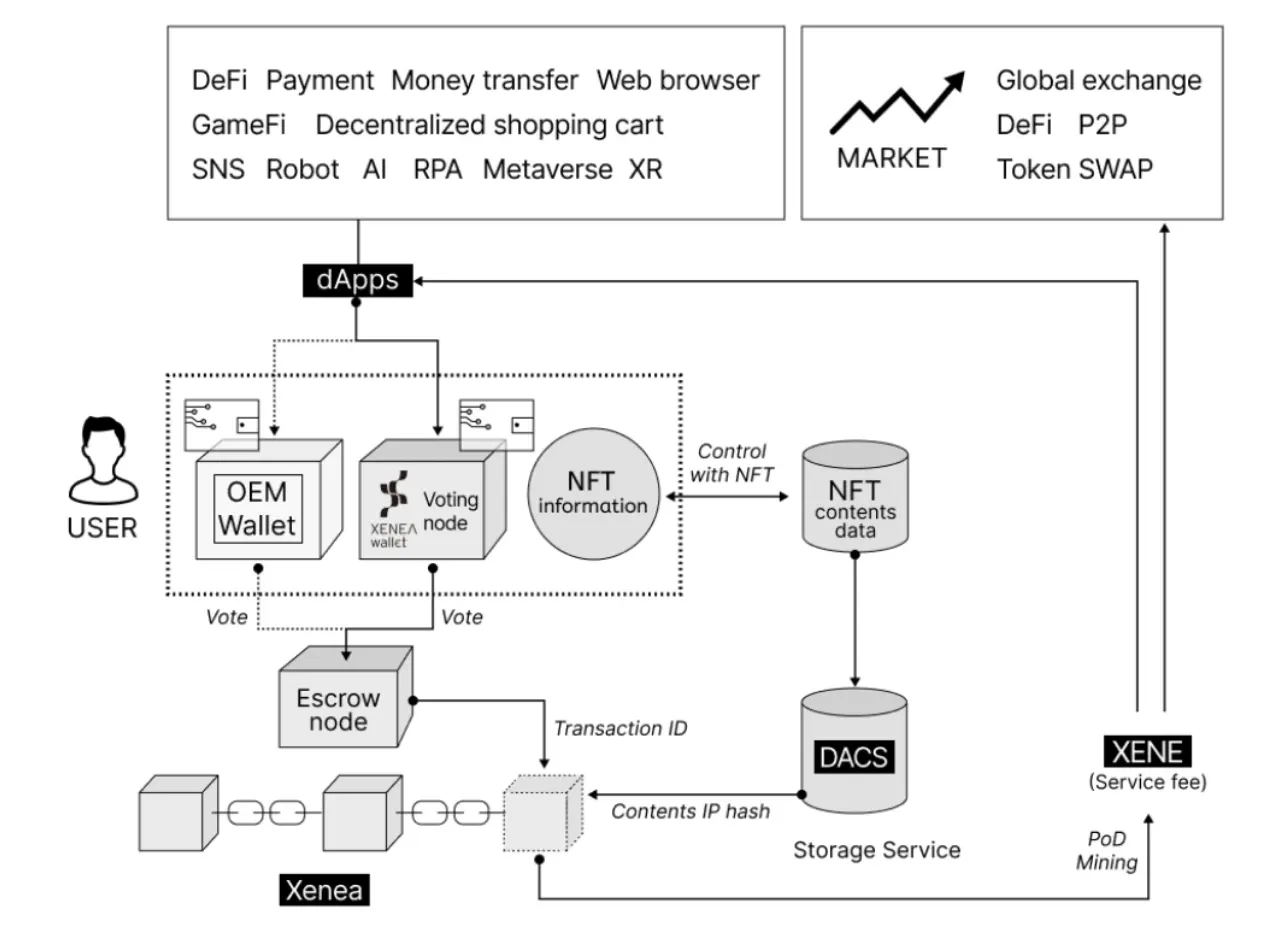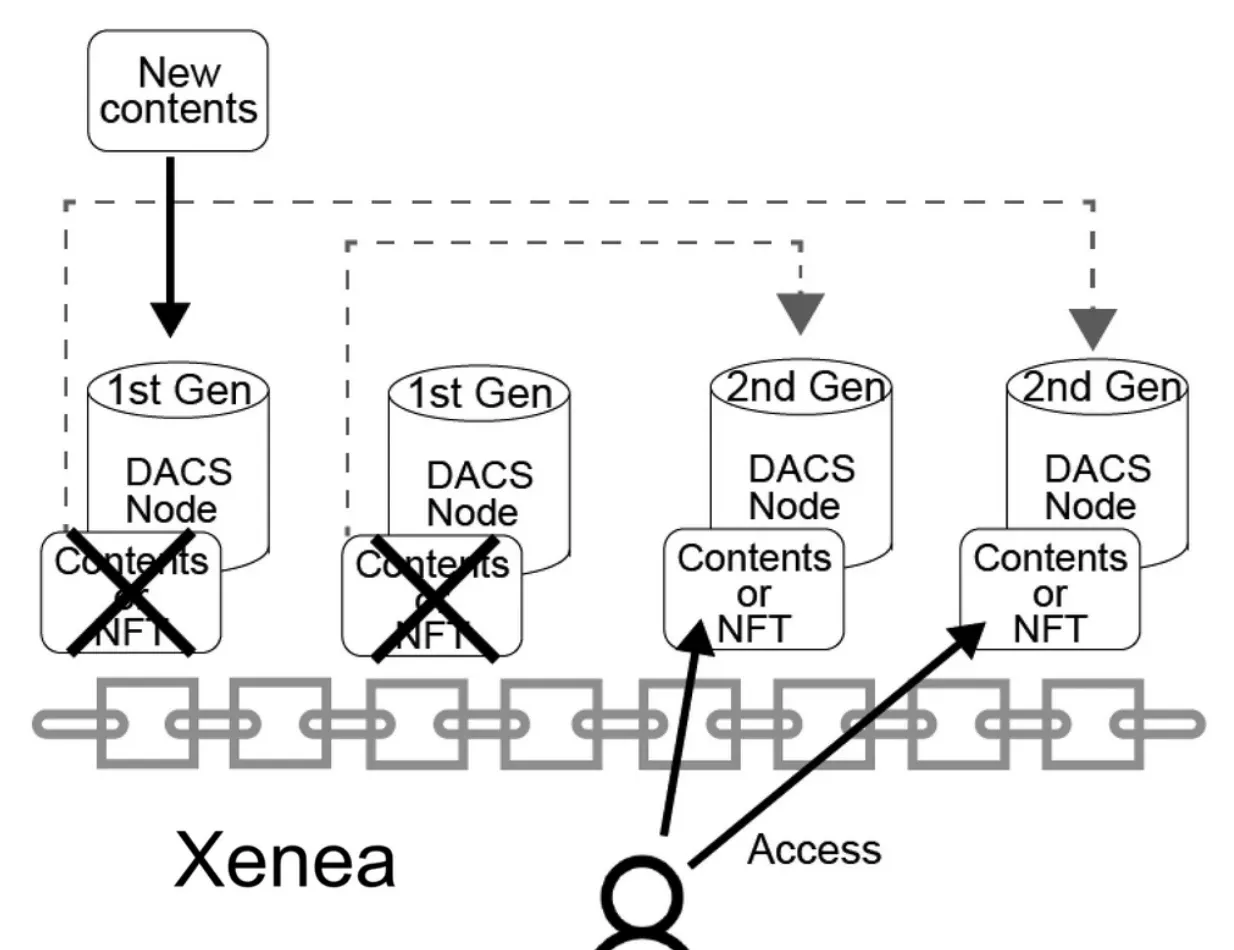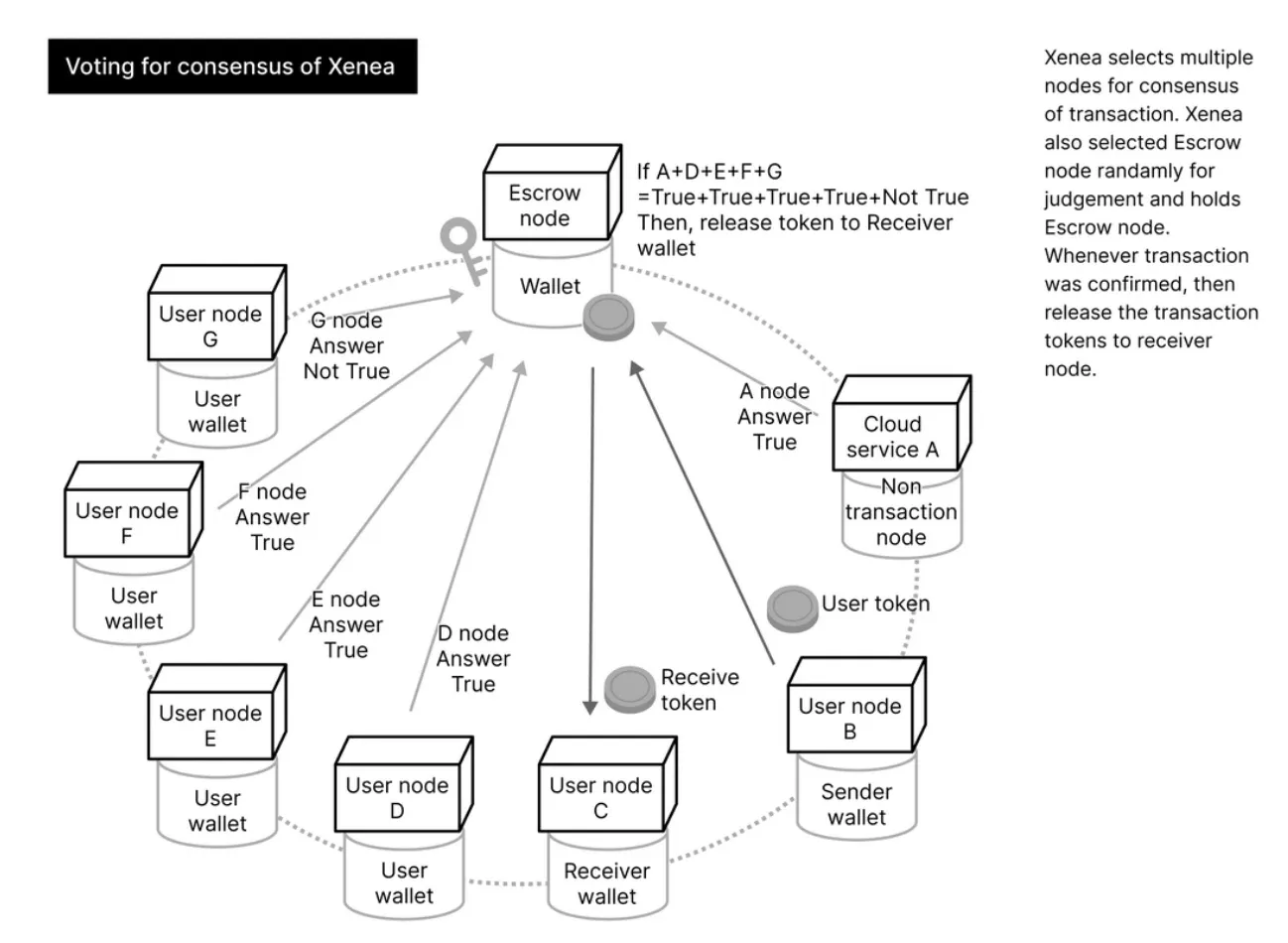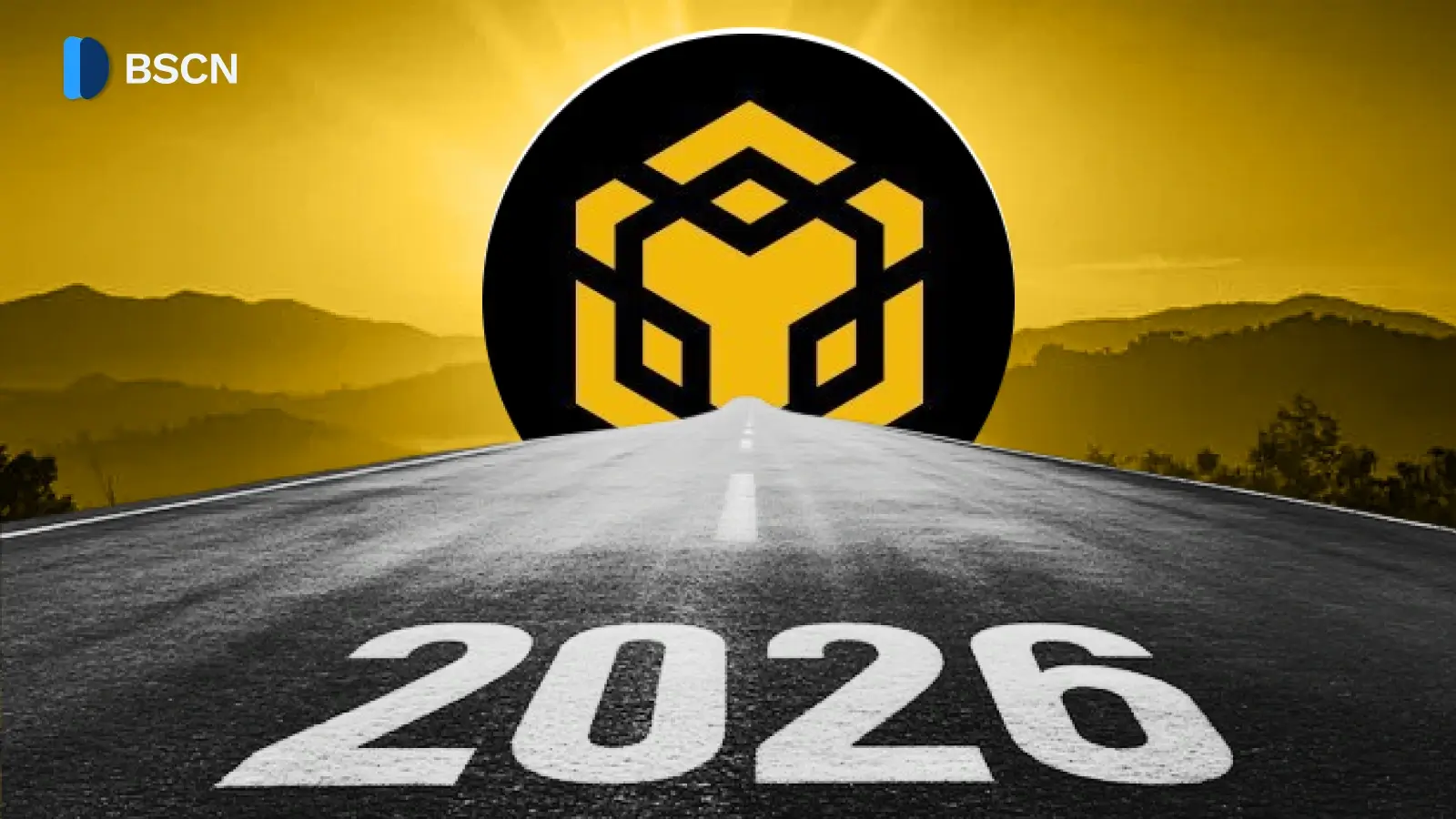Deepdive
(Advertisement)
Xenea Deepdive: Integrating Storage Solutions for Digital Asset Preservation

Explore how Xenea's Layer 1 blockchain platform integrates decentralized storage to solve data persistence challenges and facilitate asset tokenization, with its unique Proof of Democracy consensus and DACS storage system.
Crypto Rich
April 23, 2025
(Advertisement)
Table of Contents
The Foundation of Xenea Blockchain
In a digital world where data often disappears as quickly as it's created, Xenea has emerged with a solution that bridges a critical gap in the cryptocurrency landscape. This Layer 1 blockchain platform addresses what many others have overlooked: the need for reliable, permanent digital asset storage. By integrating blockchain technology with decentralized storage systems, Xenea preserves digital assets for future generations while expanding financial access worldwide.
Core Mission and Vision
At the heart of Xenea's approach lies a focus on data persistence—ensuring that stored information remains accessible indefinitely. Based in Dubai, UAE, and led by co-founder Tokuro Uhara, Xenea distinguishes itself through its foundation in rigorous academic research. Its architecture has undergone peer review by the Institute of Electrical and Electronics Engineers (IEEE), providing scientific validation rarely seen in blockchain projects.
The platform's design directly tackles the challenge of data persistence, which has been a significant limitation for many blockchain projects. By creating an infrastructure that maintains data integrity over extended periods, Xenea aims to serve as a foundation for applications that require guaranteed data availability – from financial records to cultural artifacts and intellectual property.

Origins and Development Timeline
The name "Xenea" combines Greek concepts of "Xenia" (hospitality) and "Ea" (wisdom), reflecting the project's mission to create lasting infrastructure for human knowledge. The platform emerged in response to two key market trends:
- The growing market for tokenized real-world assets (RWAs), projected to reach $16 trillion by 2030
- Limitations in existing decentralized storage solutions like IPFS and Arweave, particularly for dynamic data
Since its inception, Xenea has achieved several key milestones, including its testnet launch, mainnet beta release, and introduction of the XENEA Wallet in September 2024. The project has expanded through a global campaign across 15 countries and partnerships with initiatives like the Senet System for Web3 gaming.
Originally scheduled for Q1 2025, the mainnet launch and Token Generation Event (TGE) were delayed, as announced on March 9, 2025. The delay was attributed to an extensive security audit of the blockchain infrastructure, particularly the Proof of Democracy (PoD) consensus algorithm. According to the announcement, the third-party audit is taking longer than expected, but the team has prioritized stability, security, and resilience over meeting the original timeline. As of April 22, 2025, a new launch date remains pending.
Community Response
The announcement of the delay has generated mixed reactions within the Xenea community. Many supporters have embraced the team's transparency and focus on security:
- Some community members expressed support for the longer development timeline, believing it would ensure a more solid and secure product
- Several users accepted the delay, encouraging the team to focus on delivering value rather than rushing to meet deadlines
- Multiple supporters praised the communication style, indicating trust in the team's transparency
However, others have shown frustration with the lack of a specific new timeline:
- Some users compared Xenea unfavorably to competitors that provided clearer launch schedules
- Several community members urged the team not to extend the delay too long and requested a specific TGE date
- A portion of the community expressed disappointment with what they perceived as repeated postponements
This mixed community sentiment highlights the challenge Xenea faces in balancing thorough technical development with maintaining market momentum and community enthusiasm.
Technical Architecture and Key Features
Decentralized Autonomous Content Storage (DACS)
Xenea's core innovation is its Decentralized Autonomous Content Storage (DACS), a distributed file system designed to handle both static and dynamic data. Unlike IPFS or Arweave, which primarily store unchanging content, DACS offers two key components:
- Sustainable Generation Manager (SGM): Replicates data across multiple nodes to prevent loss
- Fast Track Contents Delivery Manager (FASTD): Optimizes storage for critical content
DACS currently maintains compatibility with IPFS but plans to transition to Xenea's proprietary hash file system in 2025. This upgrade will support real-time data editing for applications such as social media feeds, voting systems, and evolving digital assets.

Proof of Democracy (PoD) Consensus
Xenea's consensus mechanism, called Proof of Democracy (PoD), differs from traditional methods like Proof of Stake (PoS) or Proof of Work (PoW). PoD enhances security and decentralization without relying on token prices, consuming excessive energy, or requiring specialized hardware.
The PoD system involves Voting nodes and Escrow nodes, with users participating through the XENEA Wallet, which functions as a voting node. This inclusive approach allows anyone with the wallet to mine tokens, with only a Mining Passport NFT required for full consensus participation. The low-energy design of PoD, comparable to a push notification's energy use, ensures both accessibility and environmental sustainability.
The ongoing third-party security audit of the PoD consensus algorithm, cited as the primary reason for the mainnet launch delay in March 2025, underscores the innovative nature of this approach and Xenea's commitment to launching a resilient and secure network. While the extended audit timeline has postponed the launch, it reflects the team's dedication to thoroughly validating this novel consensus mechanism before full deployment.

XENEA Wallet
The XENEA Wallet, available on iOS and Android platforms, eliminates the complexity of private key management through patented secret-sharing technology (patent number: 2019-052099). This innovation allows users to login securely via Google or Apple ID, making blockchain access more user-friendly.
The wallet supports multiple functions:
- Cryptocurrency storage
- PoD mining participation
- Voting in the network
- Earning rewards through daily quizzes and missions
- Referral opportunities
Users earn $GEMS through wallet activities, which can be converted to $XENE during airdrops or the TGE. With over 1.2 million downloads, the wallet shows strong market adoption.
EVM Compatibility
As an Ethereum Virtual Machine (EVM)-compatible blockchain, Xenea allows developers to build decentralized applications using familiar tools. This compatibility supports various use cases including DeFi applications, smart contracts, and data management systems.
Tokenomics and Economic Model
The native token, XENE, powers the Xenea ecosystem and serves multiple purposes, from transaction fees to governance participation. Xenea's tokenomics prioritize security, decentralization, and sustainability with a carefully structured distribution:
- Maximum Supply: 1,832,810,964 XENE tokens
- Genesis Block Issuance: 1,201,658,964 XENE (65.6% of total)
- Mining Allocation: 631,152,000 XENE (34.4% of total), distributed through PoD
Reward Structure and Node Incentives
Block rewards are allocated to different node types in specific proportions:
- Escrow nodes: 12% of rewards
- Voting nodes: 8%
- DACS nodes: 80% (incentivizing storage provision)
To control inflation, rewards halve every two years according to a predetermined schedule. Additionally, a burning mechanism for gas fees may potentially make XENE deflationary over time.
Future Development Roadmap
As of April 2025, Xenea is focused on completing the extensive security audit of its PoD consensus mechanism, with the mainnet launch and TGE timeline still pending announcement. Despite this delay, the project continues to advance several key initiatives on its roadmap:
DACS Evolution
In 2025, DACS will adopt Xenea's hash file system to support dynamic data and real-time applications. This upgrade will enable:
- Support for truly dynamic, evolving data structures
- Infrastructure for metaverse environments with permanent objects
- Foundations for AI-driven applications
- Tools for real-time data management
The transition to Xenea's proprietary hash file system represents a significant technical advancement over current decentralized storage systems. While platforms like IPFS and Arweave excel at preserving static content, they face limitations with data that needs to evolve over time. Xenea's approach addresses this gap by enabling data to be modified without losing its historical integrity or provenance, opening possibilities for applications ranging from social media platforms to complex financial instruments that require state changes while maintaining auditability.
Wallet Enhancements
After 2025, the XENEA Wallet aims to integrate payment features similar to Apple Pay, remittance services, and modular capabilities, positioning it as a mainstream financial tool rather than just a crypto storage solution.
The wallet's evolution reflects Xenea's broader vision of bridging traditional and decentralized finance. By transforming the wallet into a comprehensive financial platform accessible to anyone with a smartphone, Xenea addresses one of the primary barriers to mainstream blockchain adoption—technical complexity. The wallet's success in attracting over 1.2 million downloads despite being in an early phase suggests significant market interest in user-friendly blockchain applications that simplify access to decentralized services.
Ecosystem Expansion
Xenea plans to continue developing partnerships, launch an Initial Node Offering (INO) for Rep and DACS nodes, and expand decentralization through increased community participation.
The planned Initial Node Offering represents an innovative approach to network infrastructure distribution. Rather than concentrating node operation among a few large stakeholders, the INO will allow broader participation in the network's core infrastructure. Additionally, Xenea's "Beyond-DX Market" will create a specialized marketplace designed for cultural assets and metaverse applications that require guaranteed data persistence, addressing a critical need in the tokenization space where maintaining permanent connections between digital tokens and the assets they represent remains a significant challenge.
Navigating Challenges in a Competitive Landscape
Despite its technological innovations and strategic vision, Xenea—like all pioneering blockchain platforms—must navigate a complex array of challenges as it moves toward full deployment. Understanding these obstacles provides a more complete picture of the project's prospects and the hurdles it must overcome.
Technical Implementation Challenges
The ambitious scope of Xenea's storage system presents significant technical challenges that demand continuous innovation:
- Scaling DACS to efficiently support increasingly diverse file systems
- Solving complex problems related to data sharding and retrieval optimization
- Developing cross-chain interoperability solutions
- Ensuring long-term data sustainability across economic cycles
- Balancing accessible governance with efficient decision-making
These technical hurdles will require ongoing research and development as the platform evolves to meet changing demands.
Timeline Management and Community Trust
The rescheduled mainnet launch, announced on March 9, 2025, has created a significant challenge in managing community expectations and maintaining momentum. While community reactions have been mixed (as detailed in the Community Response section earlier), these varied responses highlight several strategic implications for Xenea:
- Trust-building challenge: The extended development period requires Xenea to maintain continuous engagement with supporters while addressing skeptics' concerns
- Competitive positioning: Delays can affect Xenea's market position relative to competitors with more predictable launch schedules
- Leadership transparency: Questions about decision-making processes suggest a need for clearer communication about progress milestones
- Balancing quality and market timing: The focus on security requires careful messaging to explain why thoroughness outweighs speed-to-market
To preserve community trust during this extended development period, Xenea must establish consistent communication channels and provide transparent updates on audit progress without compromising security details. This approach will be crucial for maintaining enthusiasm until a new launch date is announced.
Competitive Differentiation
For Xenea to thrive in the crowded blockchain and storage space, it must:
- Differentiate from established solutions like IPFS and Arweave
- Stand out among numerous Layer 1 blockchains
- Clearly articulate the advantages of its integrated approach
- Attract developer support through resources and programs
Timing and Market Factors
Several timing-related challenges could impact Xenea's market entry and adoption, from extended development timelines to regulatory uncertainties and broader Web3 adoption trends.
Despite these challenges, Xenea's IEEE-backed technology and growing user base provide a strong foundation for addressing the inevitable hurdles of bringing innovative technology to market.
Conclusion
Xenea represents a significant advance in blockchain infrastructure by integrating decentralized storage with an EVM-compatible Layer 1 platform. Its Proof of Democracy consensus mechanism, DACS storage system, and user-friendly wallet create a secure, inclusive ecosystem for managing tokenized assets and dynamic data.
With a tokenomics model designed for sustainability and a roadmap targeting RWA tokenization and metaverse applications, Xenea is positioned to influence the future of decentralized technology. As the project works through its extended security audit in April 2025, it demonstrates a commitment to launching a thoroughly tested and robust system that can withstand the demands of enterprise-grade applications.
The combination of technical innovation, academic validation, and user-focused design provides Xenea with distinctive advantages. By solving the fundamental challenge of data persistence on the blockchain, Xenea doesn't just offer incremental improvements to existing technologies—it potentially transforms how we preserve and interact with digital assets across generations, supporting applications from financial records to cultural heritage preservation and beyond.
Visit Xenea’s website at xenea.io or follow them on X to stay updated (@Xenea_io).
Read Next...
Disclaimer
Disclaimer: The views expressed in this article do not necessarily represent the views of BSCN. The information provided in this article is for educational and entertainment purposes only and should not be construed as investment advice, or advice of any kind. BSCN assumes no responsibility for any investment decisions made based on the information provided in this article. If you believe that the article should be amended, please reach out to the BSCN team by emailing [email protected].
Author
 Crypto Rich
Crypto RichRich has been researching cryptocurrency and blockchain technology for eight years and has served as a senior analyst at BSCN since its founding in 2020. He focuses on fundamental analysis of early-stage crypto projects and tokens and has published in-depth research reports on over 200 emerging protocols. Rich also writes about broader technology and scientific trends and maintains active involvement in the crypto community through X/Twitter Spaces, and leading industry events.
(Advertisement)
Latest News
(Advertisement)
Crypto Project & Token Reviews
Project & Token Reviews
Comprehensive reviews of crypto's most interesting projects and assets
Learn about the hottest projects & tokens















